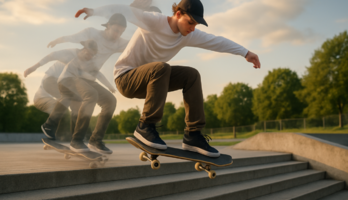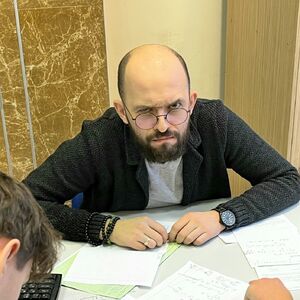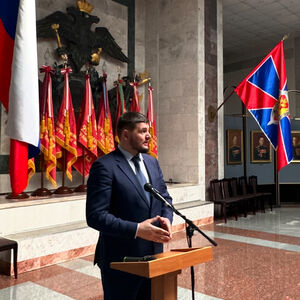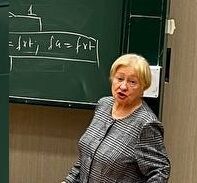Диссертация (1140363), страница 37
Текст из файла (страница 37)
Raffaeli // AngleOrthodontics. – 2010. – Vol. 80. – Р. 153–159.109. Grippaudo, C. Validation of the Risk Of Malocclusion Assessment (ROMA)index / C. Grippaudo, E. G. Paolantonio, R. Deli [et al.] // Eur. J. Paediatr. Dent. –2007. – Vol. 8, № 3. – P. 136-142.110. Insabralde, N.M. Dentoskeletal effects produced by removable palatal crib,bonded spurs, and chincup therapy in growing children with anterior open bite/ N.M.227228Insabralde, R.R.
de Almeida, J.F. Henriques, T.M. Fernandes, C. Flores-Mir, M.R. deAlmeida //Angle Orthod. –2016. –86(6). –P. 969-975.111. Jenny, J. Establishing malocclusion severity levels on the Dental Aesthetic Index(DAI) scale / J. Jenny, N. C. Cons // Aust.
Dent. J. – 1996. – Vol. 41, № 1. – P. 4346. 112. Keeling SD, King GJ, Wheeler TT, McGorry S. Timing of class II treatment:Rationale, methods, and early results of an ongoing randomized clinical trail. In:McNamara J. Orthodontic treament: outcomes and effectiveness, monograph no. 30.Ann Arbor: Center for Human Growth and Development, The University of Michigan;1995.;. – 1-112 pp.113. Kondo, E. Nonsurgical and nonextraction treatment of a skeletal class iii adultpatient with severe prognathic mandible / E.
Kondo, S. Arai //World Journal ofOrthodontics. – 2005. – Vol. 6. – P. 233-247.114. Lagorsse, A. Does gender make a difference in orthodontics? A literaturereview/ A. Lagorsse, S. Gebeile-Chauty // Orthod Fr. – 2018. – Vol. 89(2). – P. 157168.115. Lammert, K.H. Berufsschaden im Zahn- , Mund- und Kieferbereich / K.H.Lammert // 2nd ed.
Berlin: VEB Verlag Volk und Gesundheit, 1985 –164 pp.116. Larsson, E. Clinical crown length in 9-, 11- and 13 year old children with andwithout finger-sucking habit / E.Larsson, A.Ronnerman // Brit. J. Ortod- thod. - 1981.- Vol. 8, № 4. - P. 171-173.117. Lione, R. Early treatment of Class III malocclusion with RME and facial mask:evaluation of dentoalveolar effects on digital dental casts/ R. Lione, M. Buongiorno,G. Laganà, P. Cozza, L. Franchi // Eur J Paediatr Dent.
– 2015. –Vol. 16(3). – P. 217220.118. Little, R. The Irregularity Index: A quantitative score of mandibular anterioralignment / Little, R. // Am J Orthod. – 1975. – Vol. 68. – P. 554-563.119. Liu, C. Three-dimensional finite element analysis of maxillary protraction withlabiolingual arches and implants [Text] / C. Liu, X. Zhu, X.
Zhang // Am J OrthodDentofacial Orthop. – 2015. Sep. – 148(3). – Р. 466-478.228229120. Liwelling. An index of orthodontic treatment complexity / Liwelling, Ahmad,Hamdan, William, Rock // European Journal of Orthodontics.– 2007. – № 2. – P. 2532. 121. Mandall, N. A. Perceived aesthetic impact of malocclusion and oral selfperceptions in 14 15 year old Asian and Caucasian children in greater Manchester / N.A. Mandall, J.F. McCord, A.S. Blinkhorn // Eur J Orthod. – 2000. – Vol. 22. – P. 175183.122. McNamara, J.A. Components of class II malocclusion in children 8-10 years ofage / J.A. McNamara //Angle Orthod.
– 1981. – Vol. 51(3). – P. 177-202.123. Migliorati, M. Denture-frame modifications in class III patients treated withrapid palatal expansion and facemask: a prospective controlled study / M. Migliorati,A. Signori, L. Isaia, A. Menini, R. Rubiano, E. Aonzo, A. Silvestrini Biavati // MinervaSomatol.
– 2015. Jun. – 64(3). – P. 117-128.124. Mir, C.F. One-phase or two-phase orthodontic treatment?/ C.F. Mir //Evid BasedDent. – 2016. –Vol. 17(4). – P. 107-108.125. Mousoulea, S. The Effect of Chin-cup Therapy in Class III Malocclusion: ASystematic Review/ S. Mousoulea, I. Tsolakis, E.
Ferdianakis, A.I. Tsolakis // OpenDent J. – 2016 –Vol. 9(10). – P. 664-679.126. Mupparapu, M. Patterns of intra-osseous transmigration and ectopic eruption ofmandibular canines: review of literature and report of nine additional cases / M.Mupparapu // Dentomaxillofac Radiol. – 2002. – Vol. 31, № 6. – P. 355-60127. Ngan, P. Evolution of Class III treatment in orthodontics/ P. Ngan, W. Moon //Am J Orthod Dentofacial Orthop. – 2015. – Vol.148(1). – P. 22-36.128.
Ngom, P. I. A cultural comparison of treatment need / P. I. Ngom, R. Brown //Eur J Orthod. – 2005. – Vol. 27. – P. 597-600.129. O’Brien, K. Effectiveness of early orthodontic treatment with the Twin-blockappliance: A multicenter, randomized, controlled trial. Part 1: Dental and skeletaleffects. / K. O’Brien, J. Wright, F. Conboy, Y.
Sanjie, N. Mandall, S. Chadwick// AmJ Orthod Dentofacial Orthop. – 2003. – Vol. 124(3). – P. 234-243.229230130. O’Brien, K. The effectiveness of treatment of class II malocclusion with theTwin Block appliance: a randomised, controlled trial. / K. O’Brien // Am. J. Orthod.Dentofac. Orthop. – 2003. – Vol. 124 (2). – P.128-137.131. Oh, H. A retrospective study of Class II mixed-dentition treatment/ H. Oh., S.Baumrind, E.L. Korn, S. Dugoni, R. Boero, M. Aubert, R. Boyd // Angle Orthod. –2017. – Vol. 87(1). – P. 56-67.132. Otuyemi, O.D.
Perceptions of dental aesthetics in the United States and Nigeria/ Otuyemi O.D., Ogunyinka A. // Community Dent Oral Epidemiol. 1998. – Vol. 26. –P.418-420. 133. Patil, R.U. Pendulum Therapy of Molar Distalization in Mixed Dentition/ R.U.Patil, A. Prakash, A. Agarwal // Int J Clin Pediatr Dent. –2016.
– 9(1). – P. 67-73.134. Perillo, L. Comparisons of two protocols for the early treatment of ClassIIIdentoskeletal disharmony / L. Perillo, M. Vitale, C. Masucci, F. D'Apuzzo, P. Cozza,L. Franchi // Eur J Orthod. – 2016. – Vol. 38(1). –P. 51-56.135.
Petersen, P. E. Oral health information systems—towards measuring progressin oral health promotion and diseaseprevention / P. E. Petersen, D. Bourgeois, D.Bratthall, H. Ogawa // Bulletin of the World Health Organization. – 2005. – Vol. 83(9). – P. 686–693.136. Petersen, P. E. Oral health surveys: basic methods – 5th ed / P. E. Petersen, R. J.Baez // Bulletin of the World Health Organization, 2013.
– 93 p.137. Petersen, P.E. Socio-behavioural risk factors in dental caries – internationalperspectives /Petersen PE. // Community Dentistry and Oral Epidemiology. – 2005. –Vol. 33 – P. 274-279.138. Petersen, P.E. The global burden of periodontal disease/ P.E. Petersen, H.Ogawa // Periodontol 2000. – 2012. – Vol.60. – P. 15-39. 139.
Popoviwich, K. Predictors for Class 2 treatment duration / K. Popoviwich, В.Nebbe, G. Heo, K.E. Glover, P.W. Major // Amer. J. Orthodontics and DentofacialOrthopedics. – 2005. – Vol. 127 – P. 293-300.230231140. Prathapan, P. Interception of a developing class III malocclusion with facemasktherapy [Text] / P. Prathapan, V. Antony, P. G. Francis, K. M. Muhamed Shaloob, K.Jubin Hassan // Mes Dental College. – 2014. Jan. – Vol. 2(1).
– P. 38-41.141. Proffit R.W. Contemporaiy Orthodontics / R.W. Proffit // 6rd ed. St Louis, Mo:Mosby, 2018. – 744 pp.142. Proffit, W.R., The duarution and sequencing of surgical orthodontic treatment /W.R. Proffit, J.A. Miguel // Inter. J. Adult. Orthod. Orthognath Surg. – 1995. – Vol.10.– P. 35-42. 143. Rathi, A.R. Treatment of skeletal class III malocclusion using face maskRichmond, A-2-Center comparison of orthodontist's perceptions of orthodontictreatment difficulty / Rathi, Richmond, Aylott, Panahei, Rolfe, Harzer, E.Tausche.
//Angle Orthodontist. – 2001. – Vol. 71. – P. 404-410.144. Rathi, A.R. Treatment of skeletal class III malocclusion using face mask therapywith alternate rapid maxillary expansion and constriction (Alt-RAMEC) protocol /A.R. Rathi, N.R. Kumari, K. Vadakkepuriyal, M. Santhkumar // J Indian Soc PedodPrev Dent. – 2015. – Vol. 33(4). – P. 341-343.145. Richmond,S.ThedevelopmentoftheIndex(PeerAssessmentRating):reliability and validity / S. Richmond, C. Shaw, K. D.
O’Brien, I.B. Buchanan,R. Jones // Eur J Orthod. –1992. –14. –P. 125-39.146. Salloum, E. Soft tissue changes: a comparison between changes caused by theconstruction bite and by successful treatment with a modified Twin-block appliance/E.Salloum, D.T. Millett, N. Kelly, G.T. McIntyre, M.S.
Cronin // Eur J Orthod. – 2018.– Vol. 40(5). – P.512-518.147. Shadrick, V. Facemask therapy between ages six to ten years may lead to shortterm improvements for class III malocclusion / V. Shadrick, M. Walker // Evid BasedDent. – 2013. Dec. – Vol. 14(4). – P. 112-113.148. Skidmore, K.J. Factors influencing treatment time in orthodontic patients. / K.J.Skidmore, K.J. Brook, W.M. Thomson, W.J. Harding //Am J Orthod DentofacialOrthop. – 2006.
– Vol.129(2). – P. 230-238.231232149. Smyth R.S.D. Early treatment of class III malocclusion with facemask/ R.S.D.Smyth, F.S. Ryan // –Evid Based Dent. –2017. –18(4). – P.107-108.150. Sugawara, J. One-phase vs 2-phase treatment for developing Class IIImalocclusion: a comparison of identical twins / J. Sugawara, Z.
Aymach, H. Hin, R.Nanda // Am J Orthod Dentofacial Orthop. – 2012. Jan. – Vol. 141(1). – Р.11-22.151. Summers, C. The occlusal index: a system for identifying and scoring occlusaldisorders / C. Summers // Am. J. Orthod. – 1971. – Vol. 59, No 6. – P. 552-567.152. Suresh, M. One Phase versus Two Phase Treatment in Mixed Dentition: ACritical Review/ M.
Suresh, A. Ratnaditya, V.S. Kattimani, S. Karpe // J Int OralHealth. – 2015. – Vol. 7(8). – P. 144-147.153. Thilander, B. A shady of children with unilateral posterior cross bite, treated anduntreated, in the deciduous dentition / B.Thilander, B.Lennartsson // Journal ofOrofacial Orthopedics. – 2002. –Vol.
63, № 5. – P. 371-383.154. Thiruvenkatachari, B. Early orthodontic treatment for Class II malocclusionreduces the chance of incisal trauma: Results of a Cochrane systematic review/ B.Thiruvenkatachari, J. Harrison, H. Worthington, K. O'Brien // Am J OrthodDentofacial Orthop. – 2015. –Vol. 148(1). – P. 47-59.155. Tsichlaki, A.
















